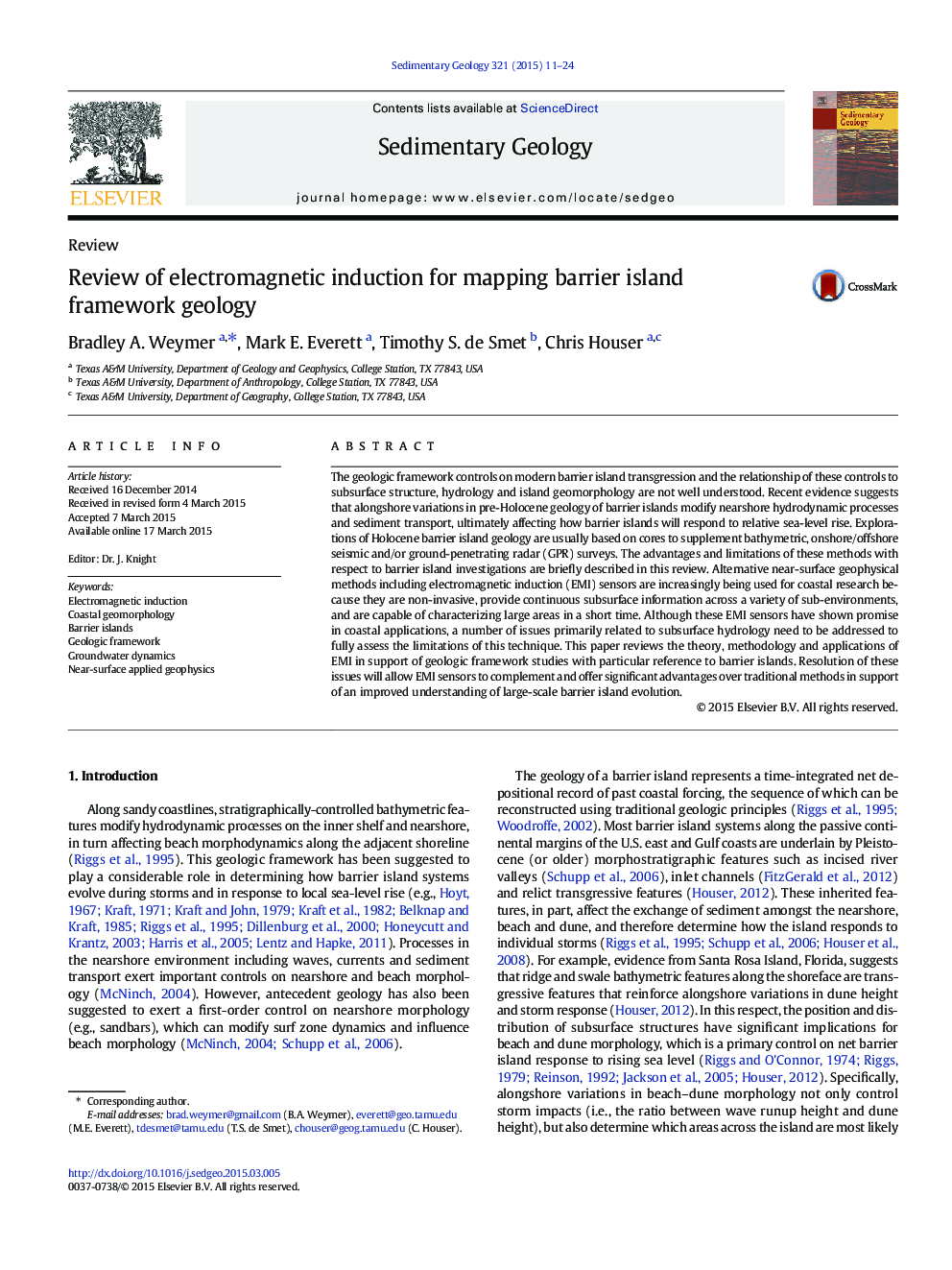| Article ID | Journal | Published Year | Pages | File Type |
|---|---|---|---|---|
| 4689210 | Sedimentary Geology | 2015 | 14 Pages |
The geologic framework controls on modern barrier island transgression and the relationship of these controls to subsurface structure, hydrology and island geomorphology are not well understood. Recent evidence suggests that alongshore variations in pre-Holocene geology of barrier islands modify nearshore hydrodynamic processes and sediment transport, ultimately affecting how barrier islands will respond to relative sea-level rise. Explorations of Holocene barrier island geology are usually based on cores to supplement bathymetric, onshore/offshore seismic and/or ground-penetrating radar (GPR) surveys. The advantages and limitations of these methods with respect to barrier island investigations are briefly described in this review. Alternative near-surface geophysical methods including electromagnetic induction (EMI) sensors are increasingly being used for coastal research because they are non-invasive, provide continuous subsurface information across a variety of sub-environments, and are capable of characterizing large areas in a short time. Although these EMI sensors have shown promise in coastal applications, a number of issues primarily related to subsurface hydrology need to be addressed to fully assess the limitations of this technique. This paper reviews the theory, methodology and applications of EMI in support of geologic framework studies with particular reference to barrier islands. Resolution of these issues will allow EMI sensors to complement and offer significant advantages over traditional methods in support of an improved understanding of large-scale barrier island evolution.
